On March 31, 2012 there will be a history show-and-tell at Orioles Community Centre.
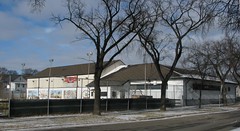
Established in 1948 at Burnell and St. Matthews, Orioles is one of Winnipeg's oldest community centres. Its roots in the neighbourhood, however, date back much further. This is a look back at Orioles that I hope to update as the history project progresses !

Established in 1948 at Burnell and St. Matthews, Orioles is one of Winnipeg's oldest community centres. Its roots in the neighbourhood, however, date back much further. This is a look back at Orioles that I hope to update as the history project progresses !
Part 1: West End Orioles (1936 - 1946)
Part 2: Transformation (1947 - 1950)
Part 3: Orioles Community Centre (1950 - 1970)
Part 4: Orioles Community Centre (1973 - 2007)
Part 5: Lists, lists lists !
NEW: Photos of the March 2012 history show and tell !
Part 2: Transformation (1947 - 1950)
Part 3: Orioles Community Centre (1950 - 1970)
Part 4: Orioles Community Centre (1973 - 2007)
Part 5: Lists, lists lists !
NEW: Photos of the March 2012 history show and tell !
The 1970s was a busy decade for the Orioles Community Centre.
The centre's catchment area of 22,000 people was one of the largest in the city. Programming expanded to include everything from drama classes to gymnastics and utilized not only the Burnell clubhouse but also area schools John M. King, Sargent Park and Greenway.
Dozens of teams played out of the club each year. In 1971-72 an additional rink was added to the north grounds of the centre and the following season they entered a total of 18 hockey teams in city leagues.
Orioles was under the guidance of George Hamende who was the centre's longest serving president (1965-66 to 1972-73). Hamende dedicated 35 years of his life to the club doing everything from coaching to organizing teen dances and holding most executive positions numerous times.
In 1973 Orioles celebrated its 25th anniversary with a carnival, complete with a midway and street parade. It ended in style with a 25th anniversary gala dinner and dance at the Maryland Hotel !
All of the activities that began in the 1950s continued through the 1970s, with some variations.
The Majorettes continued to grow in popularity. In 1977 Orioles sponsored their first Baton Camp that brought in national champions from the U.S. and Canada to teach children and instructors.
The music program moved away from being a marching band to a drum corps and a drum and bugle band.
The two continued to perform together. Above is a 1974 photo of the drum corps and majorettes before a trip to St. Paul, Minnesota where they placed fifth for best performance.
In 1970 Fort Garry Community Club brought a new sport to Winnipeg: ringette. The province sponsored demonstrations in the hopes that it would catch on as a winter sports for girls, (previous attempts at girls hockey had failed.) In 1972 other clubs began playing the game and by 1976 Orioles had a number of teams.
In 1987 a new gymnasium was built at the west end of the centre. It was named in honour of a man who played an important role in the creation of not only Orioles, but the city's entire community centre system. Charles A. Barbour was hired in 1946 as the city's first full-time recreation director, a position he held for 25 years.
In 1989 a new sport came when the Dynamo Boxing Club relocated to Orioles. The centre hosted a number of Golden Gloves tournaments that attracted boxers from the prairie provinces and neighbouring states.
In 1994 the Orioles Boxing Club was formed under Reg Bruno. The club, which is still active, has produced a number of national champions including Ryan Savage, David Lao and Roberto Romero.
Beginning in 1987 Orioles also became home to a city-wide sponge hockey tournament that continued into the early 00s.
In a January 20, 1991 Free Press Weekly article Orioles' former president Harry Burdon spoke of a growing problem faced by community clubs and similar organizations: "You've got your few people that do everything and the rest just sit back and expect (things to be done)." He said what kept Orioles going was a dedicated core of people, "There's tradition with the Orioles. We have guys who have been here 30 and 40 years..."
By 1993 it was clear that the demographics of the catchment area were changing. Those 30 and 40 year volunteers that Burdon spoke of were now aging out. Home ownership rates fell as the the area's Aboriginal and new immigrant populations increased.
At the start of the 00's Orioles had the second largest catchment area of any club in the inner city at 13,870 (1). In the areas it served, St. Matthews, Spence and parts of Daniel Mac, the average family income was 57% of the city average and the rate of single-parent households was the highest in the city at 31% (2).
Programming changed due to a lack of volunteers and to reflect the needs of the nieghbourhood. Organized sports and dance classes made way for youth drop-ins and a free lunch program. In 2000 the Orioles Learning Centre, which taught basic literacy, GED and job-finding skills, opened.
In July 2004 the city's Public Use Facilities Study (PUFS) report was released.
It made a number of recommendations regarding recreation facilities in the West End including an expansion of the Sargent Park Recreation Centre (now Cindy Klassen Recreation Complex), a possible new centre at Portage and Sherbrook (that did not happen) and the closure of the Orioles' wading pool (which did happen).
There was a catch to the suggested improvements, though. "Mayor Sam Katz has maintained neighbourhoods won’t get new facilities unless they voluntarily close some old ones." (Feb 18 2005, Winnipeg Free Press.) This led to a number of community centre closures or amalgamations around the city.
In 2005 Orioles received a major funding blow. The weekly CNIB Bingo, which earned the centre about $26,000 per year, relocated due to the smoking ban at city facilities.
In 2006 amalgamation talks began between three West End community centres: Isaac Brock (catchment area 5,050); Clifton (catchment area 4,820); and Orioles (catchment area 13,855). An agreement was finalized in December 2006 that created the Valour Community Centre to be based out of the Isaac Brock site.
"The Isaac Brock and Clifton sites both serve one neighbourhood each, Minto and Sargent Park respectively, and split the Polo Park area between them. Orioles serves St. Matthews, Spence, and a portion of the Daniel McIntyre neighbourhood." (1)
Orioles was rechristened Valour Community Club - Orioles Site.
(1) The Valour Community Centre Orioles Site in Transition
(2) Plan 2025 General Council of Winnipeg Community Centres












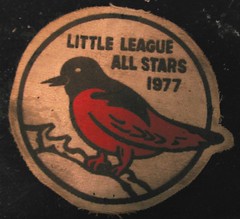



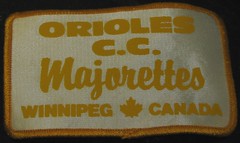

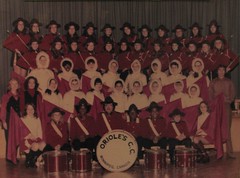


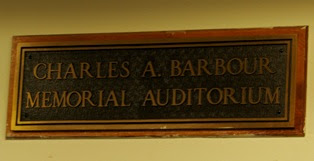

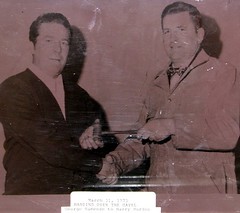

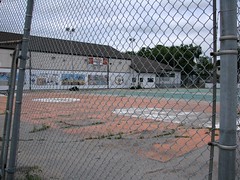
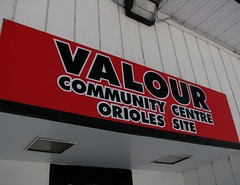
3 comments:
Orioles took on a life of it's own between 1960 and 1980. First there was the parade that carved a path through a good part of the neibourhood finishing up at the club where the Carnival was in progress, rides, cotton candy, you get the picture. Pretty sure that Baton trip in 73 was to Fargo not St Paul, least that is where my Mom and sister said they were going and given that we lived across the steet from the Volkman's they wouldn't have fibbed.
I played house league hockey there in 1972-74 ,best times ever my teammates were David backstroke and others ,the dances were awsome and movies too,Jeff busch lived on Beverly st
Have many happy memories spent at Orioles during the 50's and 60's, from tap dancing to Friday night canteens. Both my parents were very involved in the club with my Dad running the Bingo there for many years and my mother running the comic book exchange in the fifties (which used to attract at least 100 kids running around crazily with their clutch of comic books).
Post a Comment